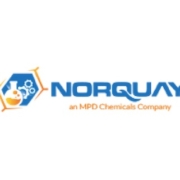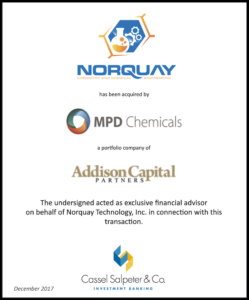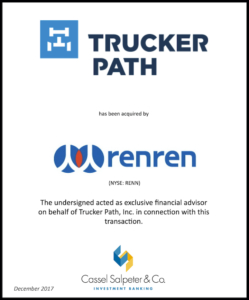Bad hire? Fast fire!
By James S. Cassel

Imagine: You hire a new employee but after a few weeks, you realize you made a bad choice. What to do?
Whether the problem is competence or chemistry, or anything else in between, the best advice is to be decisive and act — fast. Some business owners hesitate to pull the trigger because they do not want to admit they made a mistake. Unfortunately, the mistake magnifies with time and does not get better. It is OK to admit you made a mistake in hiring someone. Not terminating sooner rather than later is a bigger mistake.
Firing employees can be difficult for many reasons. As Warren Buffett said: “It’s pure agony, and I usually postpone it and suck my thumb and do all kinds of other things before I finally carry it out.”
Regardless, it must be done. As many of my clients have told me over the years, when you keep around a bad hire or employee it only gets worse the longer you retain them. Moreover, when you terminate a senior-level hire, such as a CEO, and you bring back a former CEO on an interim basis, most of the time that interim CEO will find things worse than they were when he or she left. If things were the same, then you probably would have kept the new hire.
Former General Electric Co. CEO Jack Welch — distinguished as one of history’s most famous managers, and noted for turning the struggling GE into a global giant during his 20-year tenure — was not called “Neutron Jack” for no reason. Indeed, he was known for his aggressive approach to categorizing and promptly terminating employees he ranked in the bottom 10 percent of his workforce, encouraging leaders to automatically fire their lowest performers as part of an annual corporate improvement process.
As part of his “rank and yank” system, managers were asked to group all team members into A, B, and C categories: the top 20 percent, the middle 70 percent, and bottom 10 percent. According to Welch, the middle should be coached and groomed to move up to the ranks of the top 20 percent. The bottom 10 percent, according to Welch, had to go.
Welch innately understood what many business owners neglect to realize: Keeping around poor performers becomes a major drain on your company, costing you money, time and energy, not to mention morale. It also makes things worse for the bad hire. I tell you this from experience.
So, how long should you wait before pulling the trigger? There is no cookie-cutter time line, and you should do it as soon as you realize it.
However, while it is never too “soon” to fire a bad apple, it should not come as a surprise to the person being fired. As Welch said, they should have had an opportunity to hear and respond to feedback. Make sure your employees have well-defined job descriptions and expectations, so they know what is required for success and can minimize the likelihood of failing.
When firing someone, the key is to take ownership of your hiring mistake and implement the right strategy to reposition your company. It is always good to consult with human resources specialists and labor attorneys.
As it relates to high-level terminations, communicate properly with your internal (employees) and external (clients/customers, vendors, partners, etc.) stakeholders. Provide reassurances the company is on track and will continue moving forward as planned. Also, identify what lessons can be learned to avoid the same problem with the next hire.
Bad hires or bad employees are part and parcel of doing business, for any company in any industry. We all make mistakes. Business owners who take timely, decisive action are protecting the best interests of all parties involved — including the bad hire, who is now free to find employment somewhere that he or she will be a better fit.
James Cassel is co-founder and chairman of Cassel Salpeter & Co., LLC, an investment-banking firm with headquarters in Miami that works with middle- market companies. He may be reached via email at jcassel@casselsalpeter.com or via LinkedIn at https://www.linkedin.com/in/jamesscassel.
Click here to view original article.







